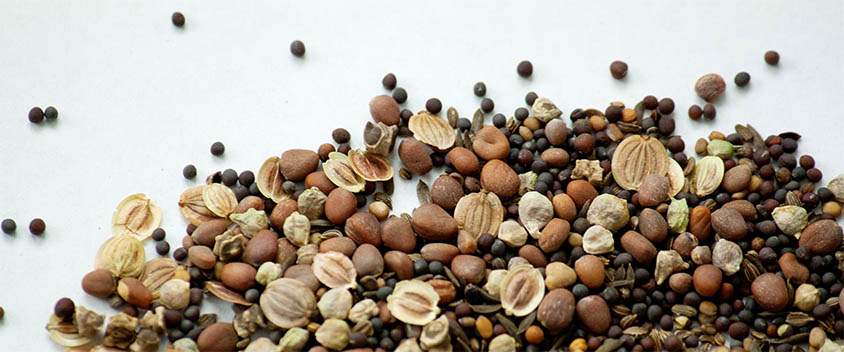Fodder Tree Seed List

The latest expenditure has been some fodder tree seed for the new earthworks and excavation we have recently finished. This October we had our second Earthworks Workshop on site here in Louisiana, and we installed hundreds of feet of swales, 2 ponds and an expanded market garden space. Since I am limited on space for pasturing my animals and want to reduce my reliance on outside feed purchases, I have come up with some fodder tree species to plant into the berms that run on contour along the property. The berms help with pasture rotation and animal management as well as help to create micro-climates that help us manage both drought and flood, heat and cold.
Let’s break down the types of plants and what they are for!
How To Use Fodder Tree Seed
Fodder trees are put in the design so I can cut branches and strip leaves for all of my animals, rabbits, ducks, chickens, cows, goats, you name the animal and we’ve probably got it on the farm.
The idea is that we have these trees that at taking up vertical space, they help shade areas that need a little less sun, they block wind, take up excess nutrients before they’re washed away from our property, and of course they feed the animals!
White mulberry – Morus alba
A high protein leafed, fast growing tree that also produces relatively high protein berries that my chickens will go bonkers over. Leaves are food for all the animals.
Black Mulberry – Morus nigra
Also, a high protein leafed, fast growing tree that produces delicious berries for us to eat, and any that fall to the ground will be devoured by my birds. Leaves are food for all the animals.
I also included some other plants that I have been wanting to do some selective breeding with.
Hops – Humulus lupulus
These are a great medicinal that help with sleep problems, as well as being a critical component of home brewing. Few Hops cultivars will do well this far south and I’d like to see if I can’t breed some that will tolerate the heat and humidity.
Black Elderberry – Sambucus nigra
This is a fantastic medicinal that is used extensively in both cold and flu remedies, makes the best jelly I’ve ever eaten, and heavenly wine.
Apples – Malus pumila
I ordered seeds of the Antonovka apple which is a russian apple that produces seed that is true-to-type, which means it will make more apple trees that are almost exactly the same as the parent trees. Very cold hardy, and are great for fresh eating and cooking.
I also have seed from several other common apple cultivars that will not reliably produce good apples. But the cool thing is that if I plant a lot of them, I may end up with some unique new apple that nobody in the world has ever eaten. And having an apple named after yourself is really fun. So I’m going to give it a go!
Peach Rootstock – Prunus persica var. Nemaguard
We have some Nemaguard rootstock seed coming also! Most peaches will produce seed that is very true-to-type, so because of that, a lot of peach rootstock is started from seed. I have a nematode resistant cultivar coming that will really help me get a bunch of disease resistant peaches growing on our property. I absolutely love peaches, so I can’t wait to bite into some!
European Plum – Prunus domestica
These are seed from ordinary domestic european plums, again, they probably won’t all produce edible plums, but we will get some decent plums from the batch, and there is a chance that we will end up with an absolutely stellar plum that is not patented that we can propagate and sell ourselves.
Sweet Cherry – Prunus avium
These are from the wild sweet cherry that usually produce somewhat small, and slightly sweet cherries. I want to develop some heat tolerant cherries, so we are playing around with these to see if we can get any that will do well for us here in the deep south.
That’s all of the seeds in that order. I can’t wait to get them in the ground and see what we can grow!
I’ll be back later this spring and summer with updates on how things are going with these new varieties!

Great article – Thanks for the info in it. Looking forward to listening to the podcasts! Do yo feel like sharing where you ordered the tree seeds from?
I ordered my garden vegetable seeds from Baker Creek, I love their variety and quality. And I ordered my tree seeds from Sheffield’s. Medicinal herbs and flowers mostly come from Horizon Herbs.
I just ordered some red elderberry and common elderberry from the state nursery in PA. Do you know if they have the same qualities that the black elderberry has? They were very cheap and I knew not to expect same quality of plants I could order from some of the catalogs, but I just hope they will have some value on my farmstead. =)
The common elderberry is great, We’ve used it for years for jelly and tinctures. I do like the black elderberry a little more for flavor, and berry size. They are relatively easy to start from seed but require a long stratification period. Since they are so easy to propagate, I’d order a couple from a nursery and make cuttings from them. Super easy to propagate! If you get some named cultivars, get a pair. Adams and Johns, or Nova and York. The reason for getting the pair is that you will increase pollination and berry yield, and because it’s an excuse to get another plant 😛